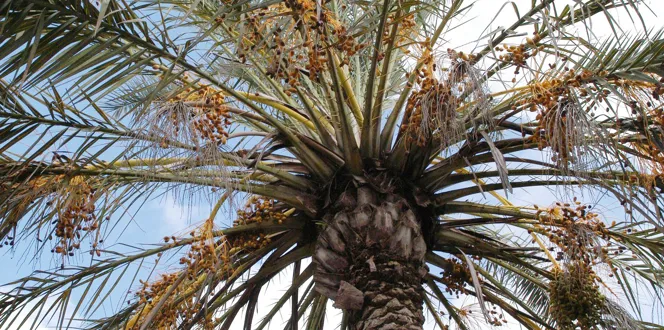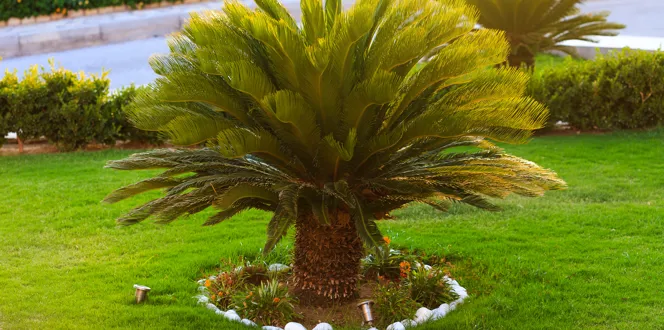Sitting pretty at the top of palm trees is the spear leaf. It’s the youngest of the tree’s leaves that starts off bunched up and eventually blossoms into a batch of fronds that complete the tree’s look.
So, there’s something about an unopened spear leaf that makes palm trees look...unfinished. Even worse, a spear leaf with stunted growth might have you concerned about the health of your tree.
If you’re worried about a spear leaf that just won’t open, keep reading for some common causes—and solutions—to this palm tree problem.
Palm tree fronds or spear not opening? Try...
Rough winter weather, heavy rain, saturated soil—all these things can play a role in a palm tree spear not opening up.
Why your majesty, kentia or other palm trees won't open
Missing soil nutrients
Problem: Palm trees rely on a blend of nutrients in the soil to support their growth. If anything’s missing, your palm will show it.
- A shortage of boron in the soil is a common cause of deformed spear leaf growth. Without the right dose of boron, the spear leaf stays tightly wound up instead of spreading out.
- Boron can be washed away from soil in a heavy rainstorm. In either case, palms missing this key nutrient have a hard time opening up their spear leaf.
Solution: Well-timed fertilization puts key nutrients back in the soil.
- Fertilizing palms with fertilizer two to four times a year depending on where you live helps make sure they have all the nourishment they need, including boron.
- Fertilizer is most effective when you time it right. Since boron is easily whisked away by heavy rainfall, avoid fertilizing too close to an expected rainstorm.
Something in the water
Problem: Palm trees in overly wet or particularly dry climates have different needs.
- Live somewhere with frequent rain showers? Watering your tree too often might be slowing its growth. Remember, boron can easily get washed away from soil, so more water equals more chances for loss of nutrients.
- Bone dry soil works against palm trees. Without adequate water, the soil will struggle to soak in nutrients from fertilizer.
Solution: Water your palm tree based on the weather.
- If you’ve already got lots of water coming in through rainstorms, let up a little on manual tree watering.
- In areas with low rainfall, water the soil more frequently.
A frozen spear
Problem: Palm spears are the youngest part of the tree, so they’re vulnerable to extreme temperatures.
- Freezing winter weather can injure the palm spear, bringing its growth to a halt.
Solution: Take steps to protect your palm from the cold.
- As you probably guessed—fertilize! Fertilizer not only provides nutrients, it also builds up their tolerance to the cold.
- Water your palm tree thoroughly before the start of the winter season.
- Avoid removing fronds unless you’re 100% sure palm leaves are brown and dead. Palms need their old fronds to help support new growth.





